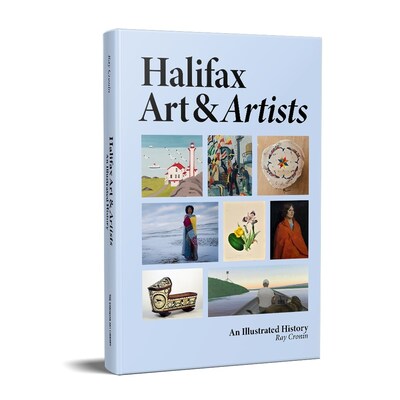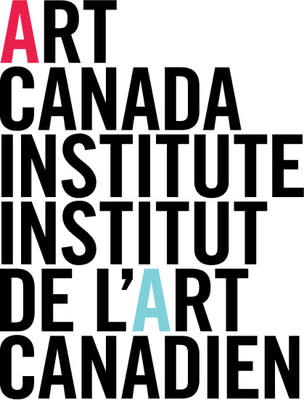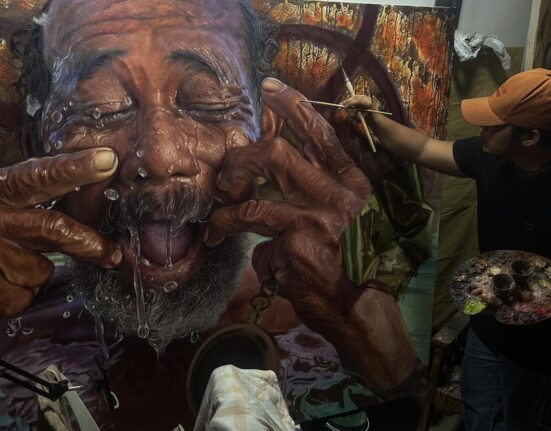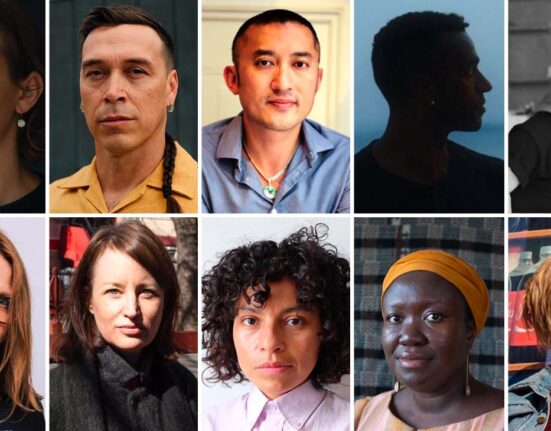TORONTO, June 18, 2024 /CNW/ – Today the Art Canada Institute (ACI) proudly releases the print edition of Halifax Art and Artists: An Illustrated History by Ray Cronin, also available as an open-access online publication in the ACI’s celebrated Canadian Online Art Book Project. The visually stunning and content-rich volume joins ACI’s growing library of print and digital books expanding and redefining the story of visual arts in Canada.
Steeped in rich Maritime history, Halifax is a place known for its extraordinary spirit of innovation and as a home to one of the boldest, most radical contemporary art scenes in the country. Halifax Art & Artists: An Illustrated History brings these two spheres together.
City of artistic firsts
Halifax, also known as Kjipuktuk, or “Great Harbour” in the Mi’kmaw language, has long been a base for visual artists working across diverse media and genres. It is also the site of many “firsts” in Canadian art history, including:
-
The first recorded art association in British North America, remarkably, was the Halifax Chess, Pencil and Brush Club, founded in 1787 and active for 30 years. The club was founded with its purpose being the “promotion of drawing and watercolour painting (as well as chess) as polite pursuits.”
-
Among the city’s landmark institutions, the Victoria School of Art and Design was founded in 1887 and remained the Nova Scotia College of Art in 1935. In 1969, it became the Nova Scotia College of Art and Design—the first independent degree-granting art school in Canada.
-
In 1830, the first public art exhibition in Atlantic Canada—and what has been claimed by some as the first public exhibition of pictures ever in British North America—was held at Dalhousie College (now Dalhousie University).
-
Halifax’s thriving art scene garnered increased national attention when the Sobey Art Award was launched at the Art Gallery of Nova Scotia in 2002. It has since become the most prestigious prize for contemporary art in Canada.
Artistic Trailblazers
From craftspeople and portrait painters to filmmakers and contemporary multidisciplinary makers, Halifax has been a home for many pioneering artists. Cronin expertly guides the reader through a rich narrative of the diverse cultures that have informed Halifax’s milieu, sharing striking images with each turn of the page. The many contributors to this bold art scene include:
-
Mi’kmaw artists and artisans (centuries old), who left petroglyphs and drawings etched into stone. Over 500 petroglyphs have been discovered in various sites around Kejimkujik National Park on the Fundy shore of Nova Scotia, dating back hundreds of years. The Mi’kmaq before contact with Europeans made many objects that are today considered visual and creative feats.
-
Christianne Morris (c.1804–1886), a noted Mi’kmaw artisan and artist’s model, and a public figure
in Halifax from around 1850 until her death. Morris had a large body of work that is represented now by just two pieces: a magnificent wooden hooded cradle and a pair of snowshoes made for a mayor of Halifax. The cradle is often credited as being the largest existing piece of Mi’kmaw quillwork. -
Arthur Lismer (1885–1969), future member of the Group of Seven. Lismer moved to Halifax in 1916 to assume the principalship of the Victoria School of Art and Design. Before the Halifax Explosion in 1917, Lismer’s works produced in Halifax were mostly landscapes, often with figures in tranquil, pastoral settings. After the explosion, the painter’s subject matter dramatically shifted to a focus on seascapes and harbour scenes.
-
Maud Lewis (1901–1970), arguably the best-known artist from Nova Scotia today. Though Lewis never had a museum exhibition during her lifetime, she was lauded in local and national press for her unique folk art—colourful paintings of landscapes, animals, and flowers, which conjured a nostalgic and optimistic view of life in Nova Scotia. Her reputation was largely spurred by people who visited her painted house in Marshalltown, now on display at the Art Gallery of Nova Scotia.
-
Alex Colville (1920–2013), immensely influential to to the art history of the city, both in his work supporting key institutions (including the Nova Scotia College of Art and Design) and in championing Atlantic Realism. Through his work, Atlantic Realism has endured as one of the most popular painting styles in the region.
-
David Askevold (1940–2008), known for his significant contributions to Conceptual art in Canada. An educator as well as an artist, Askevold’s work was characterized by its innovative blending
of narrative and multimedia elements, often exploring the intersections of language, image, and performance. -
Alan Syliboy (b.1952), revered for his activism and devotion to creating a unique visual vocabulary for contemporary Mi’kmaw art. Working in acrylic and mixed media, Syliboy creates vibrant images exploring themes of spirituality, family, struggle, and strength. While he has never lived in Halifax proper, his art and activism have profoundly impacted Nova Scotia’s capital city.
“Halifax’s art history, like so much of the rest of its history, is a series of arrivals, departures, and returns,” says author Ray Cronin. “As a place transformed by both residents and visitors, there is a unique synergy between these creators and Halifax itself, both influencer and influenced.”
A proud, and often unrecognized, history of innovation
“As is true of any colonial city, settlers brought their idea of the arts with them, often overlooking or dismissing what was already there,” said Sara Angel, Founder and Executive Director of Art Canada Institute. “But, the Mi’kmaq, whose unceded land this city occupies, have their own visual culture, including the remarkable creation of petroglyphs, which are literally written on the land. In Halifax Art & Artists: An Illustrated History, this contribution is explored along with some of the city’s most outstanding artists and artworks.”
About Ray Cronin
Ray Cronin is an author and curator who lives in Elmsdale, just outside Halifax, Nova Scotia. From 2007 to 2015, he was the Art Gallery of Nova Scotia’s director and CEO. His online art books Alex Colville: Life & Work, Mary Pratt: Life & Work, and Maud Lewis: Life & Work were published by the Art Canada Institute in 2017, 2020, and 2021 respectively.
About the Art Canada Institute
The Art Canada Institute is the only national institution whose mandate is to promote the study of an inclusive, multivocal Canadian art history to as broad an audience as possible, on a digital platform, and free of charge in both English and French, across Canada and internationally. To accomplish this, ACI works with Canada’s leading cultural institutions, art historians, curators, and visual culture experts, and is dedicated to the creation of authoritative original content on the people, themes, and topics that have defined Canadian art history.
To learn more about ACI and to access our free digital library, please visit us at: aci-iac.ca
IMAGES
Download image files here.
SOURCE Art Canada Institute


View original content to download multimedia: http://www.newswire.ca/en/releases/archive/June2024/18/c4357.html









